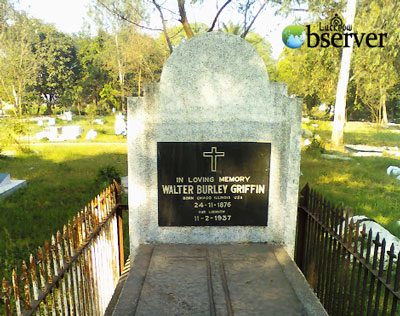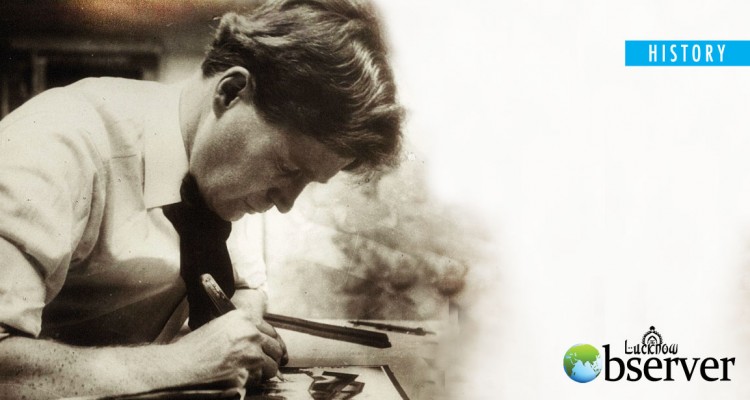An Architect Lost in Lucknow
If you have never heard the name of Walter Burley Griffin, the nineteenth-century American architect, you are not the only one. For decades, the city of Nawabs (Lucknow is commonly known as it was under kingship for many years), which owes a lot to Griffin has forgotten this architectural maestro. Griffin designed many projects in this city including the famous Lucknow University’s Tagore Library. However, the city has paid little attention to his works because they did not know what they had.
Walter Burley Griffin is a renowned name in the field of architecture. He undertook numerous site-planning commissions in United States and Australia. The most notable was the designing of Australian capital city, Canberra. Griffins moved to Lucknow in November 1935 and in February 1937, he succumbed to peritonitis and was buried at Nishatganj cemetery in Lucknow.

Griffins spent the last 15 months of his life in Lucknow. The brief period in the city provided an opportunity to unite the aspects of Eastern architecture with Western modernism in ways that provided a fitting culmination to his works. Griffin was enchanted by Lucknow’s splendor in no time. He found the Nawabi architecture as exquisite and likened Lucknow’s skyline to a perfect ‘Arabian night’s dream of white domes and minarets.’ His professional services won him lucrative commission for designing the Tagore Library at the University of Lucknow- a project that was underwritten by the Raja of Mehmoodabad. A historian from Lucknow says, “The model of the two-storied building was placed in the old library for students and staff to make suggestions for improvement in the plan. However, there was an inordinate delay as the project faltered under local constraints.”
His work on Tagore Library also led to his first private works, a number of his admirers and patrons commissioned him to design their homes. His first major completed project was a Zenana- quarters for elite Muslim women- added to the palace of Raja Jehangirabad.
Later on, he designed the Pioneer newspaper building. Griffins also designed the spectacular pavilions of the United Provinces (now Uttar Pradesh) agricultural exhibition held in Lucknow in 1937. He also created a civic memorial to King George V; his only work linked to British.
Other important landscape architecture plans included a new campus for the Lucknow University and a garden for its library. He and his wife produced more than 50 projects in 15 months ranging from private dwellings, gardens and public edifices to housing projects and suburban communities. Of these, the Bir Bhan Bhatia house is one of the finest dwellings he produced anywhere.

Tragedy however intervened and several of his projects were abandoned. Griffins died on 11th February 1937 in King George Medical Hospital and was buried in an unmarked grave at Nishatganj cemetery.
Professor Christopher Vernon of University of Western Australia says, “In his designs, Griffins refused to incorporate locally derived motifs and religious iconography. Instead, he built follies through combinations of disparate fragments that lacked historical precedent. His projects interrogated the construction of ‘Style’ as marker of identity and a source of moral instruction.”
Sadly, today in Lucknow, local knowledge of Griffins is scant at best. There has been no interest from local researchers or archives department to identify the full extent of his work. Lucknow has again become a site of urban erasure. This time, however, the wounds are self-inflicted. It poses an immediate threat to the documenting and conserving of Griffins landscape legacy.
His architectural design of the famous Pioneer press building was razed in the 1990s and replaced with a multi-story building. Unlike Canberra, which had commemorated the architect’s services several times, Lucknow seems to be in deep slumber by not even paying a slender homage to Griffins.
As we approaches Griffins 138th birth anniversary on November 24th, he lies peacefully in a desolate corner in Lucknow with grave as his last souvenir because his name is lost somewhere in the pages of history.
Uzair Hasan Rizvi
Writer is a Freelance Journalist and a Journalism student at Jamia Millia Islamia.

